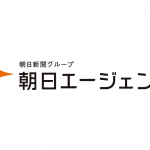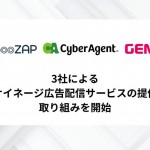プレミアム枠の自動取引の説明書 Part2 : プレミアム枠の自動取引にRTBのメカニズムはどのように機能するのか?(英文)
We have already looked at how you would execute premium programmatic from a direct sales platform in the first of this series of posts. But what about the other options, namely RTB and the ad exchange. Today we will examine RTB as a means of executing programmatic premium buys.
Let’s be clear, when we speak about RTB here, we are not necessarily talking about impression-level buying – more the method of delivery. In the context of programmatic premium, it is merely a buying mechanism for automating a premium buy. Using Deal ID, this buying methodology can identify a premium deal previously done or an agreed trading agreement as a trigger for executing a buy. So RTB is only the automation of the ad delivery rather than the trading itself. To get the low down on how this might all work in practice we asked Neal Richter, Chief Scientist at the Rubicon Project, to give us his insight.
How does this process actually work? How is this different from agreed floor pricing?
Yes. RTB is a protocol for comunicating the opportunity for a transaction, the auction is the mechanism for executing the transaction. The DealID extensions in RTB change the semantics of the auction mechanism fundamentally. Without the DealID the assumption is that the auction awards the win to the highest approved bid. With the DealID present the auction changes, it now must consider delivery objectives and priority preferences of the underlying orders. RTB as a protocol evolves to serve a real-time matchmaking signal that a given impression has been matched to an order.
There are two separate processes at work here. The first is the automation of the order process, the second is the automation of the execution of the order. Ideally the buyer and seller are having a conversation via a GUI or platform. The buyer is bringing forward their campaign objectives and parameters and the seller is bringing forward their inventory packages. Once there is a match then an IO object is created that captures the agreement and objectives in terms of dates, targeting, placement, volume, price and priority. This completes the first process and it then transitions to execution. This part might look like extended RTB or a direct insertion of ‘tags’ into an ad-server. The key is that it is automated to a greater extent that it is today.
Is this a CPM buy rather than impression level buying, and if so should it be called RTB? Is it merely a private exchange model with hard floor pricing? Is it even an auction anymore?
RTB is just a protocol, and it’s important to note what that means. RTB as a protocol is about individual impressions and giving the buyer an option to bid on them. It’s far more low-level than an order. RTB platforms in DSPs and SSPs automate the mechanics of doing this process at scale. And we’ve largely agreed on standards via OpenRTB, yet what is not standardized is the process of automating the order workflow and how that transitions into RTB.
Is programatic premium still an auction? I suppose that depends on what you define as an auction. An auction is a way of taking buyer interest and deciding a winner. While that tends to mean ‘highest bid wins’, what is being bid on? If we’re taking the view of an auction at the impression level then the highest bid should win as the objective is to maximize the sales price. However take the view of an auction of a million impressions.. Should you sell each of those to the highest bidder? Not necessarily if we take the view that the orders for blocks of impressions are the bids. There the job of the auction is to execute the orders for each impression.
Will Deal ID bring in more additional high-end spend for publishers?
DealID shifts the focus to the order rather than the microscopic view of individual impressions. RTB and the technology partners powering it have done a wonderful job of enabling the buyer to use data for more precise audience targeting than ever before.. yet the direct-response budgets were the early adopters. We’re all betting that further automation will bring higher brand budgets online.
Is RTB the best delivery mechanism for programmatic premium compared to the other two options, namely, 1) a direct sales platform (shinyads, isocket); and 2) through an exchange?
We see two logical mechanisms for programmatic premium, RTB and ad server API automators.
What ShinyAds, iSocket, Maxifier, YieldEx and others are working on is automating directly with the primary ad servers to insert orders and prioritize them correctly.
Both are viable options as ‘execution protocols’. Which one is used seems to depend primarily on how the inventory is sold as a package and what private data the buyer wants to use to determine which impressions to buy.
Rubicon is currently proposing a dealID extension standard within the OpenRTB community. We’re thrilled with the feedback and iteration so far. The next step should be an order and inventory packaging API that encompasses RTB and direct integration protocols. We believe these efforts will help the industry move forward in automating premium guaranteed.












